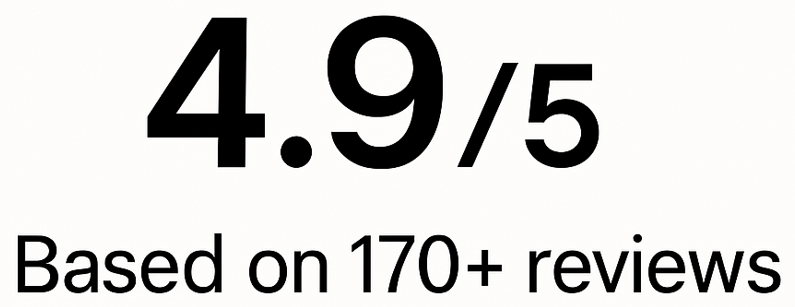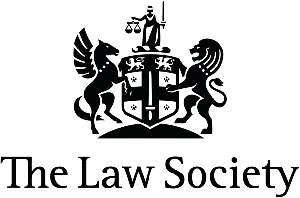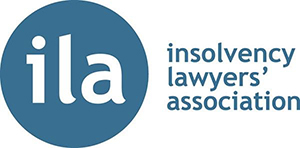Managing your business’s finances can be tricky, especially when it comes to handling personal funds as a company director. One key area that many directors overlook is the Director’s Loan Account (DLA), a record of any money borrowed by the director from the company or loaned by the director to the company. Mismanaging this account can lead to significant tax penalties, so it is essential to understand how it works. In this article, we discuss director’s loan accounts and show some director’s loan account examples.
For expert advice on managing your Director’s Loan Account, contact our expert lawyers today for a Free Consultation on 0207 459 4037 or book an appointment using our online form below.
What Is a Director’s Loan Account?
A Director’s Loan Account tracks money exchanged between a director and their company that falls outside regular salary or dividends. This includes personal funds you lend to the company and any money you borrow from it. Properly managing this account is essential for avoiding tax complications and maintaining a clear separation between personal and business finances.
For Example:
If John, the director of GreenSpace Ltd, lends £3,000 of his personal money to the company to cover a short-term cash flow issue, this loan would be recorded as a liability in the DLA, meaning the company owes John £3,000.
On the other hand, if John withdraws £1,500 from GreenSpace Ltd for personal use, this would be recorded as a debt John owes to the company, which must be repaid within a specific timeframe to avoid tax penalties.
Both types of transactions must be documented and managed in accordance with tax rules, as improper handling can lead to penalties for both the director and the company.
Legal Requirements for Director’s Loan Accounts
To stay compliant with UK tax laws, there are specific rules regarding how and when director’s loans must be repaid. Failing to adhere to these rules can result in significant penalties under the Corporation Tax Act 2010 and the Income Tax (Earnings and Pensions) Act 2003 (ITEPA):
Repayment Deadline (Section 455 of the Corporation Tax Act 2010)
Under Section 455 of the Corporation Tax Act 2010, if a director borrows money from the company, the loan must be repaid within 9 months and 1 day from the end of the company’s financial year.
If the loan is not repaid within this timeframe, the company becomes liable to pay Section 455 tax on the outstanding balance. This tax is charged at a rate of 33.75% on the amount owed, but it can be reclaimed by the company once the loan is repaid in full. However, any interest charged on Section 455 tax during the period cannot be reclaimed.
For Example:
Bright Designs Ltd lent £12,000 to its director, Emma, in January 2024. The company’s financial year ends in March 2024, meaning Emma has until January 2025 to repay the loan.
If Emma doesn’t repay the loan by this deadline, Bright Designs Ltd will be liable for Section 455 tax at 33.75%, which amounts to £4,050 on the £12,000 loan.
While the company can reclaim this tax when Emma eventually repays the loan, any interest accrued during the period is non-refundable. For partial repayments, such as if Emma repays £6,000 before the deadline, Bright Designs Ltd would only owe Section 455 tax on the remaining £6,000, which would be £2,025.
Loans Over £10,000 (Sections 175-178 of the Income Tax (Earnings and Pensions) Act 2003 (ITEPA))
According to Sections 175-178 of the ITEPA, if a director’s loan exceeds £10,000 at any point during the tax year, it is treated as a benefit in kind.
This means the director will need to pay income tax on the loan, and the company will need to pay Class 1A National Insurance Contributions (NICs) at a rate of 13.8% on the benefit in kind. The amount treated as a benefit is the excess over £10,000. The director is required to report the loan on their P11D form to HMRC.
For Example:
RiverTech Ltd lent its director, Sarah, £15,000 in February 2024. Since the loan exceeded £10,000, Sarah will need to report the £5,000 excess as a benefit in kind. The Class 1A National Insurance Contributions (NICs) rate is 13.8%, so RiverTech Ltd must pay £690 (13.8% of £5,000) in NICs. Sarah will also need to pay income tax on the £5,000. If she is a basic-rate taxpayer (20%), she will owe £1,000 in income tax on the benefit.
Interest on Loans (ITEPA)
If the loan exceeds £10,000 and the interest charged by the company is below HMRC’s official rate (currently 2.25% for the 2023-2024 tax year), the difference between the company’s interest rate and HMRC’s rate is treated as a taxable benefit in kind.
The director will need to pay income tax on the benefit, and the company must pay Class 1A NICs on the benefit.
For Example:
HealthWorks Ltd lent its director, Alex, £11,000 in April 2024 but only charged an interest rate of 1%. Since HMRC’s official interest rate is 2.25%, the 1.25% difference is treated as a taxable benefit. The taxable benefit is £137.50 (1.25% of £11,000).
Alex will need to pay income tax on the benefit, and HealthWorks Ltd will also be liable to pay Class 1A NICs on the benefit, which totals £18.97 (13.8% of £137.50).
What are the Tax Implications of a Director’s Loan Account?
Understanding the tax implications of a DLA is crucial to avoid unexpected liabilities. Whether your DLA is in credit or debit, there are specific tax rules you must follow, especially when it comes to interest charges, reporting, and potential penalties like the Section 455 tax.
Mismanagement can lead to significant tax costs for both you and your company, so careful attention is required.
In Credit
If the company owes you money, there are no immediate tax consequences. However, if you charge the company interest, this must be reported on your personal Self-Assessment tax return.
Example: Alpha Marketing Ltd owes its director, James, £7,000. James charges Alpha Marketing Ltd interest on the loan at the rate of 3%. The company can claim the interest as a business expense, but James must declare the interest as personal income in his Self-Assessment tax return.
In Debit
If you owe the company money and fail to repay it on time, your company will face the 33.75% Section 455 tax charge. Additionally, loans over £10,000 will be taxed as a benefit in kind, which means you will need to file a P11D form with HMRC and pay tax on the loan.
Facing Legal Issues Related to Director’s Loan Accounts?
While a Director’s Loan Account (DLA) can be a valuable financial tool for both directors and companies, it can also lead to various legal complications if not properly managed. Common legal issues related to DLAs include:
Disputes Over Repayment
Failing to repay loans on time can result in personal liability and claims from creditors or liquidators, especially in the event of insolvency.
For Example: Sarah, the director of GreenTech Ltd, borrowed £20,000 from the company’s DLA but failed to repay the loan within nine months of the company’s financial year-end. As GreenTech Ltd entered insolvency, the liquidator sought repayment of the outstanding amount. Sarah faced personal liability and had to settle the loan using her personal funds to avoid legal action from creditors.
Benefit in Kind Disputes
If loans exceeding £10,000 are not treated correctly for tax purposes, significant disputes with HMRC may arise, leading to hefty fines and penalties.
For Example: James, a director atAlpha Marketing Ltd, withdrew £15,000 from the company without reporting it as a benefit in kind. When HMRC audited the company’s accounts, they imposed a fine for failing to declare the loan properly. James had to repay the tax due and settle additional penalties for misreporting.
Tax Penalties for Misreporting
Directors who fail to report DLAs correctly, or use them to avoid personal tax liabilities, can face severe penalties, as seen in the case of Re Paycheck Services 3 Ltd.
For Example: Laura, a director at River Consultants, withdrew funds from the company as a loan but failed to report it in her personal tax return. HMRC pursued Laura for unpaid taxes and imposed penalties on both her and the company, resulting in significant financial strain. The company was also fined for failing to comply with tax regulations.
Director Misconduct Claims
Improper withdrawals of company funds for personal use can lead to breach of fiduciary duty claims and even personal liability for mismanagement.
For Example: Adam, a director of ClearWater Solutions Ltd, withdrew £12,000 from the company’s DLA to cover personal expenses without board approval or proper documentation. When the company’s shareholders discovered the unauthorised withdrawals, they brought a breach of fiduciary duty claim against Adam. He was required to repay the funds and was personally liable for the damages caused to the company.
Disputing HMRC Tax Decisions
If you face penalties or disputes with HMRC related to your DLA, understanding how to effectively challenge a tax decision is crucial. We recommend reviewing our article on “How to Challenge a Tax Decision in the UK – Proven Steps for Disputing HMRC Rulings”, which offers step-by-step advice on how to handle tax disputes.
Example: Emma, the director of BrightStar Ltd, received a tax penalty of £5,000 from HMRC for misreporting a Director’s Loan Account. After reviewing her options and following legal advice, she disputed the tax decision. By submitting additional documentation and evidence, Emma successfully reduced the penalty imposed on BrightStar Ltd to £2,500.
For advice on handling complex DLA issues, contact Go Legal on 0207 459 4037 for a Free Consultation.
Recording Director’s Loan Account Transactions – Directors Loan Account Example
One of the most crucial elements in managing a Director’s Loan Account is ensuring that all transactions are properly recorded. The table below provides an example of how DLA transactions should be documented, with clear entries for both money loaned by the director to the company and money borrowed by the director for personal use.
| Date | Transaction Description | Debit (Business Asset – Director Owes Company) | Credit (Business Liability – Company Owes Director) |
| 01/01/xx | Director lends £1,000 to the company. | – | £1,000 |
| 10/01/xx | Director purchases stationery for £25 on behalf of the company. | – | £25 |
| 11/01/xx | Director withdraws £250 from the company for personal use. | £250 | – |
| 13/01/xx | Director claims £100 for travel expenses from the company. | – | £100 |
| 20/01/xx | Director withdraws £250 for personal use. | £250 | – |
| 25/01/xx | Payroll is run, and wages are posted, including £800 NICs and taxes. | £800 | – |
| 31/01/xx | End-of-month balance, director owes £1,750 to the company; the company owes the director £1,925. | £1,750 | £1,925 |
Proper recording of these transactions is essential for keeping track of what the director owes to the company and what the company owes to the director.
How Can a Director’s Loan Be Repaid?
Repaying a Director’s Loan is a key part of managing a DLA, as failing to repay loans in a timely manner can lead to tax penalties (see further below).
There are several ways a director can repay the loan, and choosing the right method will depend on the company’s financial situation and the tax implications.
- Cash Repayment – Directors can repay the loan by making cash payments or bank transfers directly to the company. It is essential to record these payments accurately in the company’s financial records.
- Dividend Payment – Directors can issue a dividend to themselves and use that money to repay the loan. While this method allows repayment, it will also trigger tax liabilities on the dividend, which must be reported to HMRC.
- Salary Adjustment – Directors can increase their salary to offset the loan, but the increased salary will be subject to income tax and National Insurance Contributions (NICs).
Repayment must be completed within 9 months and 1 day from the end of the company’s financial year to avoid the company being charged Section 455 tax at 33.75% on the outstanding balance.
Common Errors with Director’s Loan Accounts
Directors can easily make mistakes when handling DLAs, especially when they aren’t familiar with the relevant tax laws. Below are some common errors and their potential consequences, with examples to illustrate the risks:
- Not Repaying on Time
- Failing to Report Benefit in Kind
- Using Company Funds for Personal Expenses
- Incorrectly Writing Off Loans
- Not Charging Interest on Loans Over £10,000
Avoid Costly Mistakes: Legal Cases Involving Director’s Loan Accounts
When Director’s Loan Accounts are mismanaged, the consequences can be severe, leading to disputes with HMRC, creditors, or even within the company itself. Understanding how similar cases have been handled by the courts can help you better navigate your own legal challenges. The following cases highlight common issues directors face with DLAs and demonstrate how courts have addressed disputes ranging from loan mismanagement to tax evasion and director misconduct.
| Case Name | Details | Key Takeaways |
| Re Mumtaz Properties Ltd [2011] EWCA Civ 610 | The director used the company’s funds through the DLA for personal expenses without formal loan agreements. The company went into liquidation, and the liquidator sought repayment of the overdrawn DLA. The court ruled that the director had misappropriated funds and was liable to repay the DLA with interest. | Directors must formalise loan arrangements and ensure that personal use of company funds is properly accounted for to avoid personal liability. As Arden J stated, “…it was not open to the respondent to the proceedings in the circumstances of this case to escape liability by asserting that, if the books and papers or other evidence had been available, they would have shown that they were not liable in the amount claimed by the liquidator.” |
| HMRC v Holland [2010] UKSC 51 | The director failed to report the DLA exceeding £10,000 as a benefit in kind and was penalised by HMRC for tax evasion. The court ruled that the director was liable for unpaid taxes and penalties due to improper tax treatment of the loan. | Directors must comply with tax rules regarding loans over £10,000, including reporting and paying taxes on benefits in kind, or face penalties. |
| Re Paycheck Services 3 Ltd [2010] UKSC 51 | The directors used Director’s Loan Accounts to withdraw large sums from the company without proper reporting, leading to significant tax liabilities. The court ruled that directors were personally liable for failing to comply with tax reporting obligations. | Directors must ensure that loans taken from the company are reported and taxed correctly. Misreporting loans as a means to avoid personal tax liabilities can result in severe penalties and personal liability. |
Our Winning Approach to Director’s Loan Account Tax Disputes
Successfully managing disputes involving Director’s Loan Accounts (DLAs) requires strategic planning, detailed legal expertise, and timely action. At Go Legal, our expert tax lawyers have a proven track record of helping clients navigate the complex legal and tax issues surrounding DLAs—from tax penalties to creditor disputes during insolvency.
Our approach is designed to protect your interests and resolve matters efficiently, whether through negotiation, mediation, arbitration, or litigation. Our winning strategy includes:
- Whether you’re facing HMRC investigations, repayment disputes, or potential personal liability, our team will provide personalised guidance based on your unique situation.
- We develop a bespoke legal strategy to resolve your DLA dispute as efficiently as possible.
- Our team will conduct an in-depth analysis of your DLA situation, assessing the legal and tax implications.
- Protect your sensitive financial documents with Go Transfer, our secure portal, allowing you to exchange confidential information with your legal team privately and securely.
- Stay connected with your dedicated legal team through a WhatsApp group or our 24/7 chat feature.
- We offer flexible payment plans, including fixed fees, so you can pursue your case without undue financial burden.
Contact our expert Director’s Loan Account dispute team today on 0207 459 4037 or book a Free Consultation via our online form to take the first step toward resolving your DLA issue.
Frequently Asked Questions (FAQs) About Director’s Loan Accounts
Q. What happens if I don’t repay the loan on time?
If you fail to repay the loan within the required timeframe, the company is liable to pay Section 455 tax at a rate of 33.75% on the loan balance. The tax can be reclaimed once the loan is repaid, but any interest incurred is not refundable.
Q. Can I write off a Director’s Loan?
Writing off a director’s loan may trigger tax liabilities, as it is considered income to the director. It must be reported in your Self Assessment tax return, and the company must declare it as a benefit in kind, leading to further tax implications.
Q. Are there tax implications for loans over £10,000?
Yes. Loans exceeding £10,000 are treated as a benefit in kind, and you will need to pay income tax on the benefit. The company will also need to pay Class 1A National Insurance Contributions (NICs) on the loan.
Q. What are the tax consequences of not charging interest on a Director’s Loan?
If you borrow more than £10,000 from the company without paying interest or paying below the official HMRC rate (currently 2.25%), the difference will be treated as a taxable benefit. Both the director and the company will be liable for tax and NICs on the loan.
Q. Can I take multiple loans from the company?
Yes, but you must ensure all loans are properly documented, repaid within the timeframe, and reported for tax purposes. Taking multiple loans without repaying them can lead to increased tax liabilities and potential penalties from HMRC.
Q. What should I do if I dispute a tax penalty related to my Director’s Loan Account?
If HMRC has issued a penalty related to your DLA, it’s crucial to act quickly and seek legal advice. You can also refer to our guide on How to Challenge a Tax Decision in the UK, which provides steps for disputing HMRC rulings.
Q. Can I be personally liable if my company becomes insolvent and I have an outstanding Director’s Loan?
Yes. If a company goes into liquidation and you have an overdrawn DLA, you may be held personally liable for the repayment of the loan. In some cases, liquidators will seek to recover funds from directors personally, especially if the DLA was mismanaged.
Q. How do Director’s Loan Accounts impact insolvency?
If a company becomes insolvent, liquidators may seek to recover overdrawn DLAs from directors. As seen in Re Mumtaz Properties Ltd [2011], directors who have improperly used company funds can be personally liable to repay the company during liquidation.
Q. What legal risks do I face with Director’s Loan Accounts?
Mismanagement of a DLA, such as failing to repay or report loans properly, can result in personal liability, tax penalties, or claims from liquidators if the company becomes insolvent. In some cases, directors can also be held responsible for breach of fiduciary duties.
Fixed Fee Directors Loan Accounts Experts
Managing your Director’s Loan Account doesn’t have to be complicated, but it does require attention to detail.
By keeping accurate records, repaying loans on time, and understanding the tax implications, you can avoid penalties and ensure your business remains compliant with UK tax laws.
If you need expert advice on how to handle your DLA, Go Legal is here to help. Our experienced lawyers can guide you through every step, ensuring you stay compliant and make informed financial decisions for your company.
For tailored advice on managing your Director’s Loan Account, contact Go Legal today on 0207 459 4037 or book a consultation using our online form for a Free Consultation.































